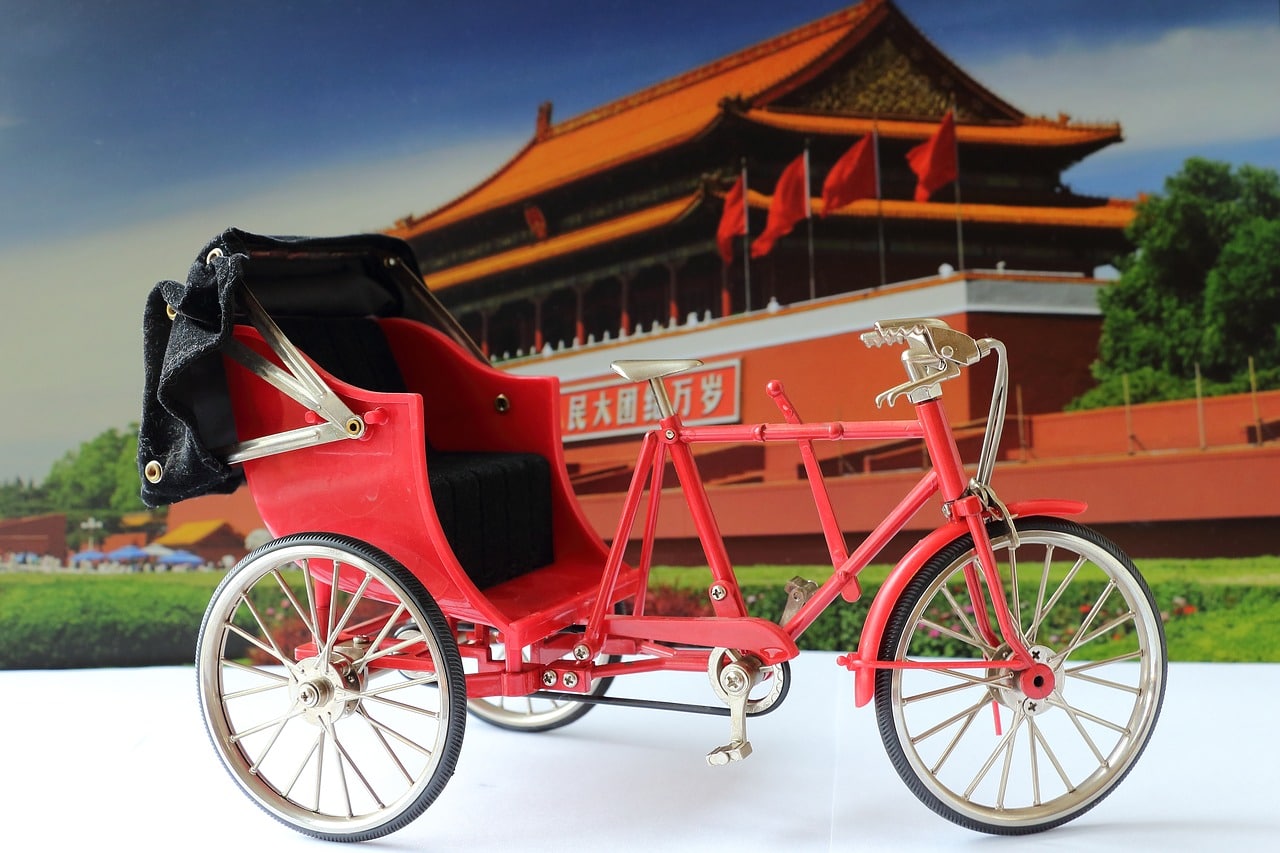
In the countries of South and East Asia, from India to China, a traditional means of transport known as rickshaw.
Basically this peculiar means of transport is a kind of two-wheeled tricycle driven by one person. An evolution of the original design, which consisted of a simple wooden cart pulled by a person on foot.
Today anyone who travels to the most traditional tourist destinations of the Asian giant will be able to see many of these vehicles. On Beijing for example, where the rickshaw is simply known as bike-taxi. Hundreds of these vehicles travel the streets of the center of the Chinese capital every day, piloted by hard-working and expert drivers who fearlessly enter the circulatory chaos of the city.
It is not actually the most comfortable or fastest way to get around the city, but tourists love them.
El price The one-hour rickshaw ride is about 30 yuan (about 4 euros at current exchange rates). In other cities of the country, such as Hangzhou o Shenzhen, the rates are even cheaper.
History of the rickshaw in China
The "Chinese rickshaw" became popular as a means of transportation used by wealthier Chinese in the late XNUMXth century. The work of the driver (although it would be more correct to call it a "shooter") of these cars may seem hard to us, but it was even more so in times past, when the rich and powerful were transported in bunks.
The first models began to circulate in China in 1886. Only a decade later their use as public means of transport it became generalized. The rickshaw was an important element in China's urban development in the XNUMXth century. Not only as a means of transport, but also as a means of subsistence for thousands of people.
Historians estimate that around 1900 in Beijing alone, some 9.000 of these cars were circulating, employing more than 60.000 people. This number did not stop growing, reaching 10.000 by the middle of the century.
However, everything changed after the war and the rise to power of Mao Zedong. For the communists, the rickshaw was a symbol of capitalist oppression of the working class, so they removed them from circulation and banned its use in 1949.
Tour Beijing in a rickshaw
The rickshaws that travel the streets of China today are no longer pulled by a man on foot, but by a driver on a bicycle. It's still hard work, although not as hard as before.
En Beijing It is worth differentiating between the rickshaws that offer a service similar to that of the taxi and those that are offered to tourists as a picturesque way to visit the main monuments of the city. Thus these tourist rickshaws they enter the hutongs, the alleys of the oldest part of the Chinese capital.
The experience is intense, although it is important for the traveler to know a few things before getting into one of these vehicles.
To start with, you have to know bargain the price. Many drivers will try to make us pay up to 500 yuan (more than 60 euros) for a one-hour ride, which is a very inflated fee. If we stand firm and know how to haggle, the agreed price can be lowered to as much as 80 yuan, and even less.
Another thing to know is that the driver will most likely stop at a friend or relative's store. The idea is that passengers spend some money there before continuing with the monumental route through the city.